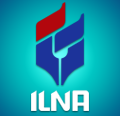Iran's Key Agricultural Exports in 2024: Pistachios Remain a Symbol of National Production

In the first quarter of 2024, Iran’s agricultural sector has once again reaffirmed its central role in the country’s non-oil economy. Despite international sanctions and a challenging global economic climate, Iranian agricultural exports have continued to perform well, with certain products demonstrating strong demand across international markets.
According to the latest figures from the Ministry of Agriculture Jihad, the value of Iran’s agricultural exports during the period from March to the end of February 2024 surpassed $6.1 billion. The leading products include pistachios, dates, saffron, apples, and various types of herbs and medicinal plants. These products are not only significant for their export revenue but also for their contribution to rural employment and regional development.
Among all agricultural commodities, Iranian pistachios have long held a special place. In 2024, pistachio exports remained one of the top contributors to the country’s trade balance in the agricultural sector. The United States, China, India, and the EU were among the primary destinations for this high-value nut.
Kerman province continues to serve as the beating heart of Iran’s pistachio industry, accounting for over 70% of total national output. Farmers in Rafsanjan, Zarand, and Sirjan reported relatively good yields this year, although water scarcity remains a growing concern. Nonetheless, improvements in irrigation methods and the expansion of export-oriented packaging centers have helped maintain Iran’s global reputation for quality pistachios.
“Pistachio is more than a crop for us. It’s a national asset,” said one local official in Kerman. “Despite the challenges, we are committed to keeping Iranian pistachios among the finest in the world.”
After pistachios, dates are the second most important export product, particularly from southern provinces such as Khuzestan, Hormozgan, and Sistan-Baluchestan. With strong demand from Gulf countries and Southeast Asia, Iranian dates remain highly competitive in both price and taste. The Bam and Mazafati varieties are especially favored in international markets.
Saffron, often referred to as "red gold," maintained its position as the third-largest export item. Produced mainly in Khorasan Razavi and South Khorasan, Iranian saffron continues to dominate the global market, with Spain, the UAE, and China among its main importers. Despite ongoing issues related to price volatility and smuggling, official export figures for saffron remained stable in the first two months of 2024.
Another segment that gained ground in early 2024 was the export of medicinal plants, including thyme, cumin, and licorice. These products, mostly cultivated in western and central provinces, have seen increasing demand in both regional and European markets due to the rise of organic and traditional medicine trends.
Meanwhile, apple exports — led by orchards in West Azerbaijan and East Azerbaijan — have shown promising growth. Despite logistical challenges, Iranian apples reached markets in India, Russia, and Iraq, where consumers appreciate their natural taste and competitive price.
Looking ahead, officials and experts express cautious optimism about the rest of 2024. While climate change, water shortages, and access to international banking systems remain major concerns, the resilience of Iran’s agricultural producers and exporters is evident.
Government support in the form of subsidies for water-saving technologies, modern packaging, and export facilitation could help maintain the momentum in the coming months.
The agricultural sector remains not only a vital component of Iran’s economy but also a source of cultural identity and national pride. As global markets shift toward healthier and more sustainable products, Iran’s longstanding traditions in agriculture offer a strong foundation for continued growth — provided that internal challenges are addressed with the same seriousness as external ones.
endNewsMessage1
